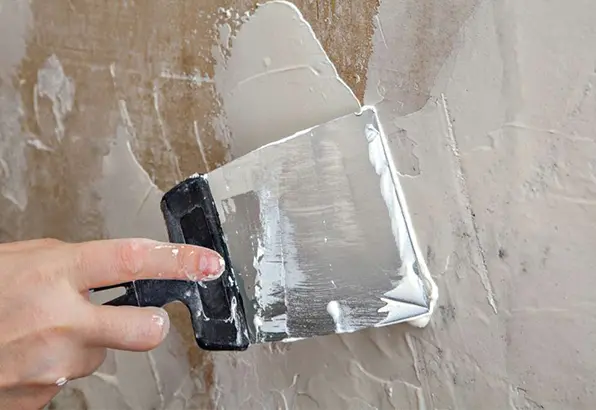During the drying process of honeycomb ceramics,celluloseThe role of (usually added as a molding aid and pore forming agent) is closely related to the risk of drying cracking. The core principle is that cellulose indirectly reduces cracking by adjusting the moisture distribution of the body, improving plasticity, and controlling drying rate; But if the drying process is improper, the thermal decomposition or moisture migration imbalance of cellulose itself may also exacerbate cracking. The following are the specific mechanisms of action and key measures to avoid cracking:
1、 Core characteristics of cellulose related to cracking during drying process
Water retention and uniformity of moisture content
Cellulose (especially cellulose ether) has good water retention ability, which can slow down the evaporation rate of water on the surface of the green body, avoid the formation of a hard shell on the surface before the internal drying ("surface dry and internal wet"), and thus reduce tensile stress cracking caused by uneven internal and external shrinkage.
Body structure support
Cellulose forms a three-dimensional network structure in the green body, enhancing its strength (especially the "green strength" in the early stage of drying), resisting the stress caused by drying shrinkage, and reducing the risk of brittle fracture.
Perforation and breathability
Cellulose decomposes and forms pores during high-temperature sintering. During the drying stage, these undecomposed cellulose particles can act as "channels" to help the internal moisture slowly migrate to the surface, reducing the moisture gradient.
2、 Key measures to avoid drying and cracking (combined with cellulose properties)
1. Control the addition amount and dispersibility of cellulose
Moderate addition amount:
celluloseInsufficient addition can lead to poor water retention, low body strength, and easy cracking; Excessive use can increase the risk of cracking due to the high water absorption and expansion rate of cellulose, resulting in increased shrinkage during drying (especially at low temperatures). The usual addition amount is 0.5% to 2% of the total mass of the green body (adjusted according to the pore size and wall thickness of the honeycomb ceramic, the addition amount needs to be reduced for thin-walled products).
Fully dispersed:
If cellulose is unevenly dispersed, it will form localized high concentration areas, leading to an imbalance in water distribution (high concentration areas retain too much water and dry slower than the surrounding areas), causing local stress cracking. It is necessary to ensure uniform dispersion through high-speed stirring or pre dissolution treatment (such as dissolving cellulose ether in water before adding it to the billet).
2. Optimize drying process parameters (core is to control moisture gradient)
Segmented drying, gradient heating:
Using the water retention property of cellulose, control the drying rate in stages:
Low temperature pre drying (40-60 ℃, relative humidity 60%~80%): During this stage, cellulose is not decomposed, and surface moisture evaporation is controlled by a high humidity environment, allowing the internal moisture of the body to slowly migrate to the surface (avoiding rapid surface hardening), with a duration of 50%~60% of the total drying time (especially suitable for honeycomb ceramics with wall thickness>1mm).
Medium temperature drying (60-80 ℃, relative humidity 40%~60%): Gradually reduce the humidity to promote the continued migration of internal moisture. At this point, cellulose begins to slowly dehydrate but still maintains structural support, avoiding cracks in the body due to rapid shrinkage.
High temperature drying (80-120 ℃, relative humidity<40%): Remove residual moisture. At this point, cellulose has partially decomposed, and the strength of the green body is mainly supported by the ceramic particle skeleton. It is necessary to control the heating rate (≤ 5 ℃/h) to avoid thermal stress cracking.
Control wind speed and airflow direction:
The wind speed inside the drying room should be uniform (0.5-1.5m/s) to avoid uneven evaporation of surface moisture caused by rapid local airflow; Adopting an airflow direction perpendicular to the honeycomb cell, utilizing the cell structure to accelerate the discharge of internal moisture and reduce the humidity difference on both sides of the cell wall.
3. Match cellulose type with green body characteristics
Choose low shrinkage cellulose:
Prioritize the use of modified cellulose ethers (such as hydroxypropyl methyl cellulose HPMC), which have a lower volume shrinkage rate during drying compared to unmodified cellulose (such as methyl cellulose MC), especially suitable for thin-walled honeycomb ceramics (wall thickness<0.5mm).
Combined with the synergistic effect of pore forming agents:
If it is necessary to improve breathability, cellulose can be compounded with other low shrinkage pore forming agents (such as graphite and starch) to reduce the concentration of shrinkage caused by a single cellulose (the compounding ratio needs to be adjusted through experiments to avoid excessive porosity leading to insufficient strength of the green body).
4. Pre treatment of the green body before drying
Natural aging:
The formed honeycomb body is left at room temperature (20-25 ℃) for 24-48 hours, utilizing the water retention property of cellulose to naturally balance the moisture inside the body and reduce the initial moisture gradient (especially for extruded honeycomb ceramics, which may have uneven moisture distribution during the extrusion process).
Sealed moisturizing:
Seal the surface of the blank (such as covering it with plastic film), leaving only the top breathable, forcing water to slowly evaporate from the top, and avoiding rapid dehydration of the sides and bottom due to contact with the drying table.
3、 Special scenario handling (such as large-sized, irregular honeycomb ceramics)
Using microwave-assisted drying:
For uneven wall thickness or irregular structures (such as variable diameter pores), the penetration of microwaves is utilized to simultaneously heat the interior and surface of the billet, combined with the moisture conduction effect of cellulose, to reduce local overheating or moisture retention (microwave power needs to be controlled to avoid premature decomposition of cellulose due to local high temperatures).
Moisturizing and cooling in the later stage of drying:
After drying, keep the green body in an environment of 50-60 ℃ and relative humidity of 50% for 2-4 hours, and then slowly cool it down to room temperature to avoid thermal stress cracking caused by sudden temperature drops (especially suitable for green bodies containing a high proportion of cellulose).
summary
celluloseBy using water retention, structural support, and breathability, honeycomb ceramics can reduce drying cracking. However, it is necessary to adopt three core measures: reasonable addition amount, uniform dispersion, and segmented gradient drying, combined with the matching of cellulose type and green body characteristics, in order to maximize its effectiveness. The key logic is to use cellulose to control the rate of water migration, ensuring uniform shrinkage of the body and avoiding local stress concentration.


TEL:+86 (0311) 8444 9786
Email:sales@double-bulls.com
Email:Export@double-bulls.com
Address:No.9 Weisi Road, Jinzhou City Eco-nomic Development Zone, Shijiazhuang City, Hebei Province.

Website

Brochure

Video